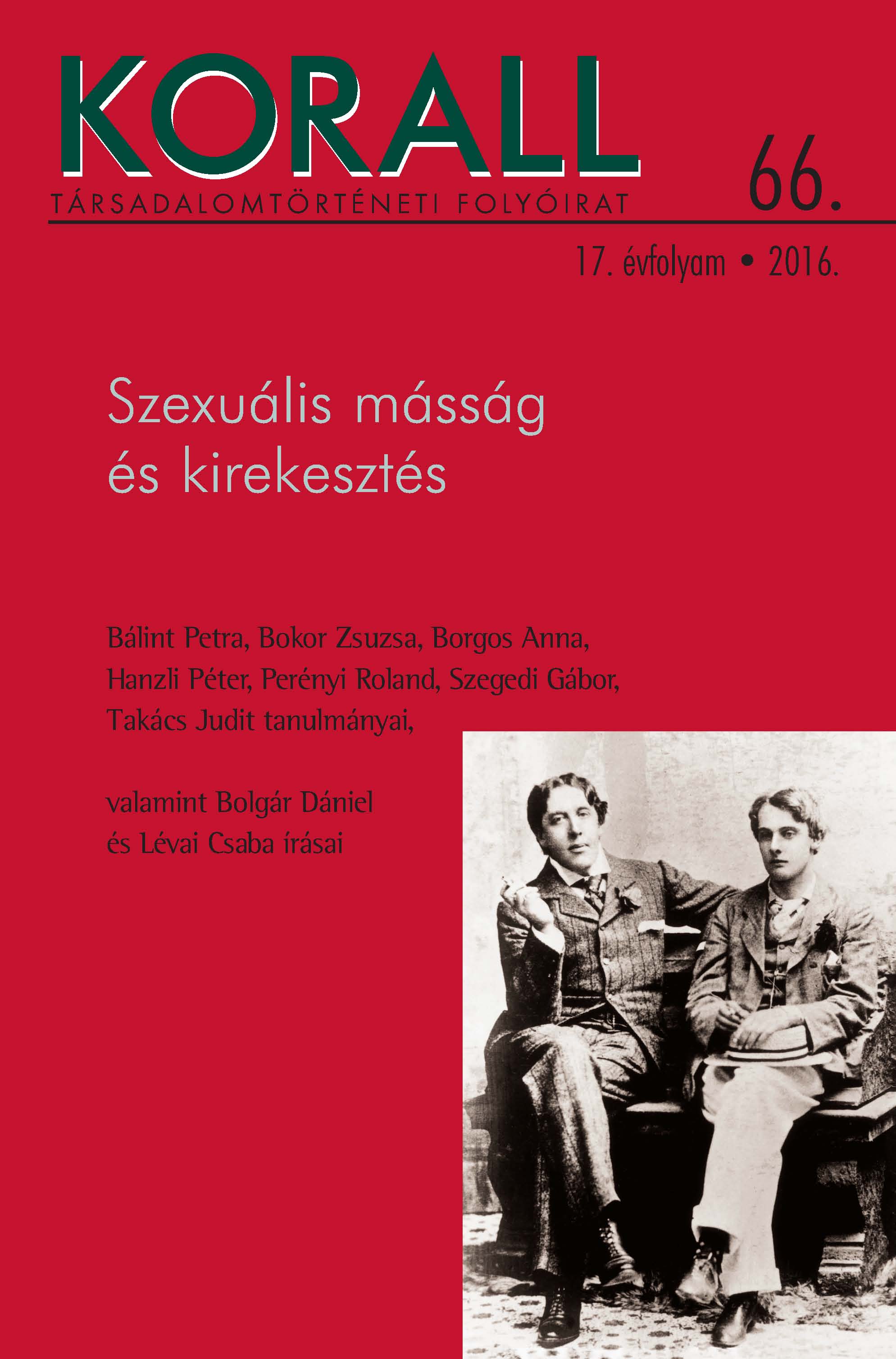Többneműség és/vagy ruhacsere: egy 18. századi álhermafrodita esete
Multisexuality and/or Cross-Dressing: A Fake Hermaphrodite in the Eighteenth Century
Author(s): Petra BálintSubject(s): Social history, Gender history
Published by: KORALL Társadalomtörténeti Egyesület
Keywords: gender studies;sexuality;social history;
Summary/Abstract: Sexual identity and orientation is heavily dependent on time and place and so is the meaning of femininity and masculinity, social gender and sexual gender. Besides biological determinants, gender and sexuality have always had a social aspect throughout history, therefore it can only be interpreted in the context of social relations.Bálint demonstrates this approach through the case of a young girl presented to the court of Eger in 1760 who claimed that she was a hermaphrodite and lived as a man. Various questions emerge about the girl, Ancsa Bodnár. Why did she claim she was a hermaphrodite keeping her real gender a secret? What were the consequences of being “intersexual”, to use a modern term? How did society and the jury approach dissenting sexual appearances? And why did Bodnár choose to live as a man if she was not really androgynous?In addition to the discussion of the cultural-historical aspects of hermaphroditism and women living as men, Bálint also studies cross-dressing and the phenomenon of changing gender. What were women’s motives to wear men’s clothes and to assume men’s roles? The study presents eighteenth-century court materials and the confessions of offenders to examine cross-dressing as a survival strategy in everyday life.
Journal: Korall - Társadalomtörténeti folyóirat
- Issue Year: 2016
- Issue No: 66
- Page Range: 100-115
- Page Count: 16
- Language: Hungarian

